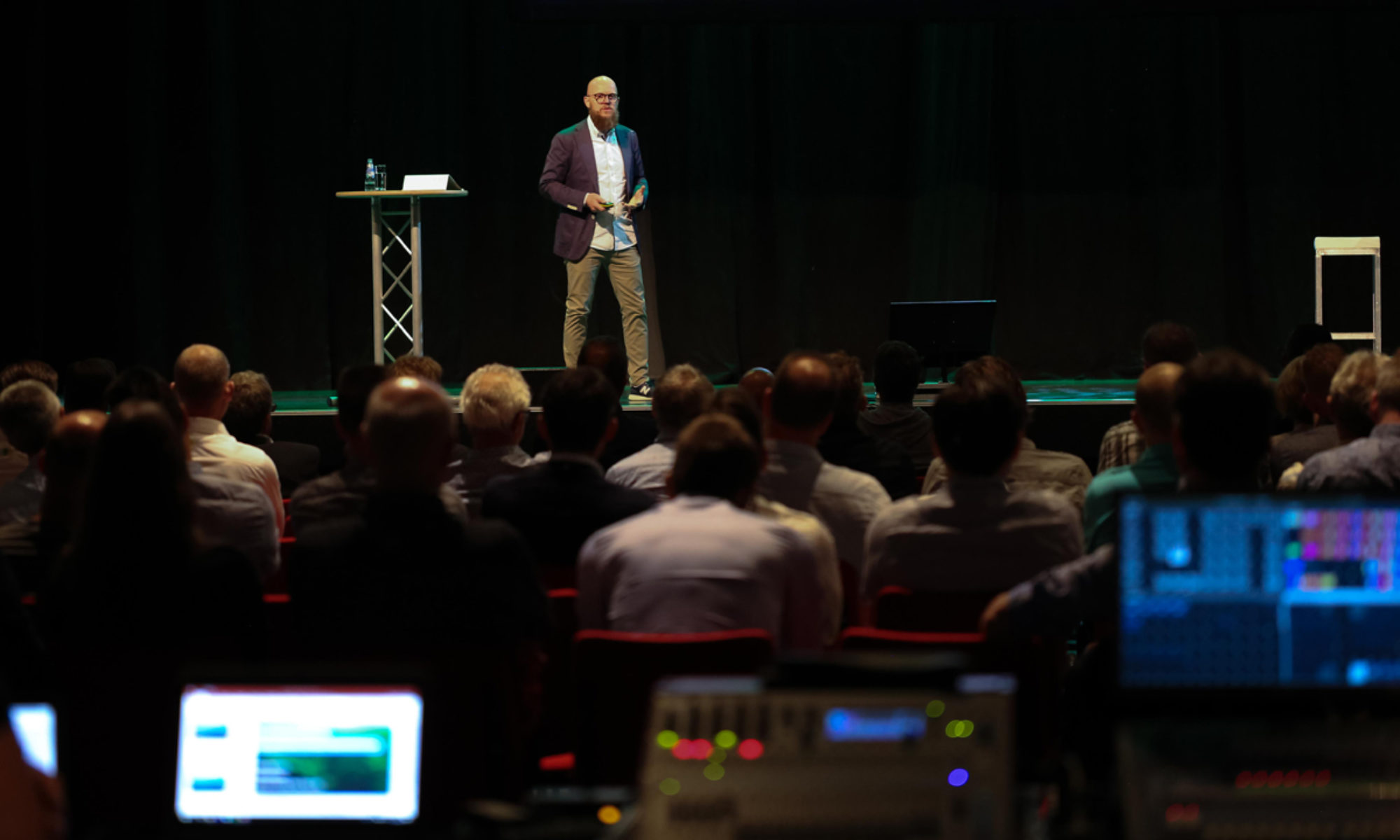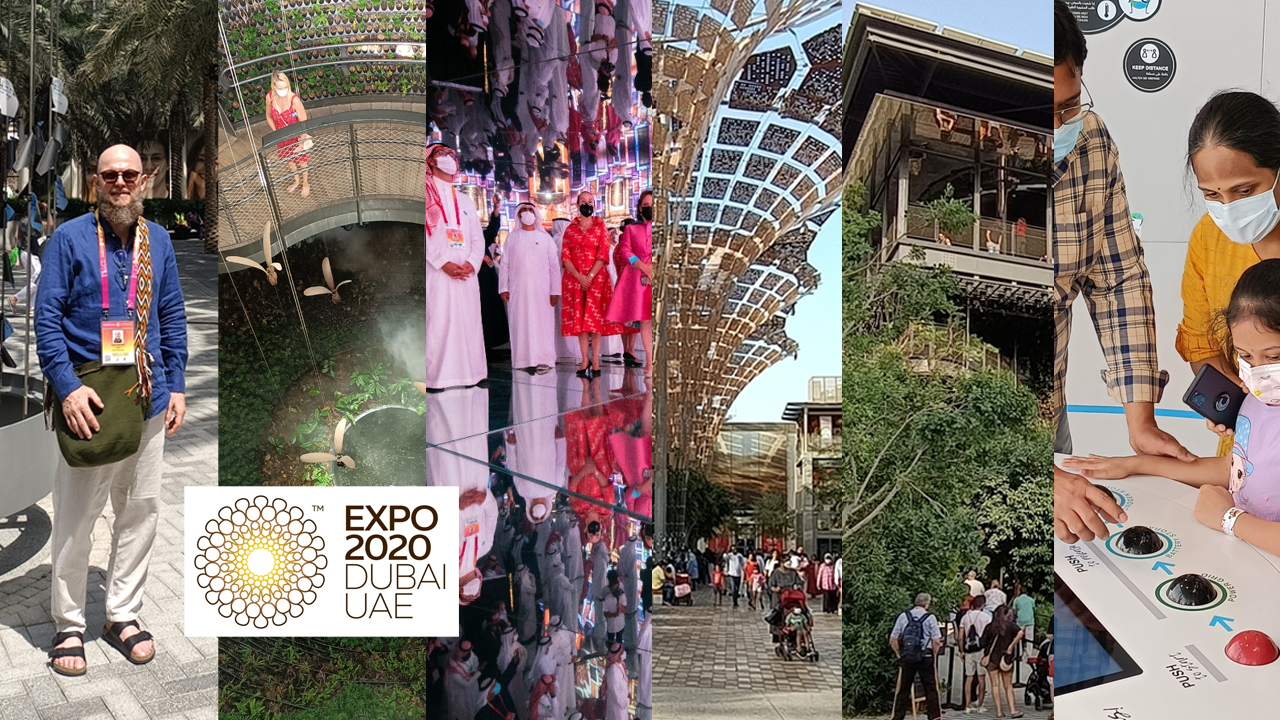Last week, I had the opportunity to visit Dubai and the “Expo 2020 Dubai“. It was an extraordinarily inspiring and interesting experience, so now when back home, I want to share some of my thoughts and inputs from the Expo. I´ll do so from a “Sustainable Building” and “Smart Cities” perspective, covering both general aspects of the Expo, as well as impressions I got from the almost thirty pavilions I visited.
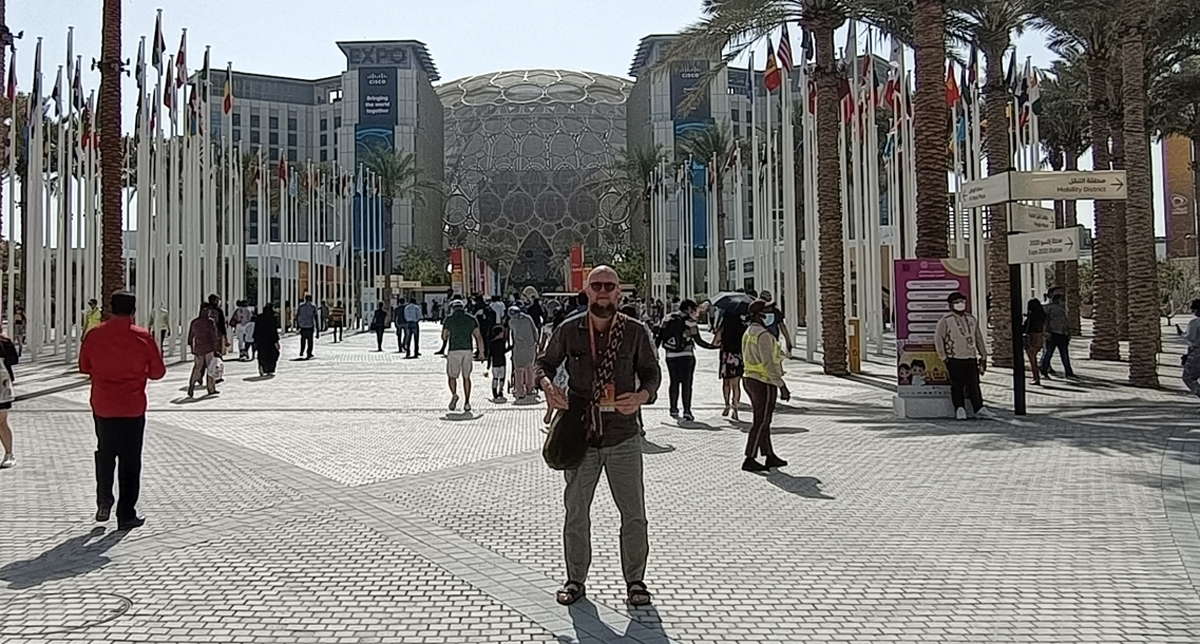
The Dubai Expo 2020, was supposed to have been celebrated in 2020, but was delayed due to the COVID pandemic and did not open until October 2021. Now, 6 months later, it is coming to its end on the 31st of March 2022. 192 countries participated with their own pavilions, and despite the restrictive situation related to travel and the limitations in the organization of events during this period, the Dubai Expo 2020 has attracted more than 20 million visitors, which I consider a remarkable success. Now, let’s move on to the content.
Sustainability and Sustainable Buildings
The Social, Economic and Environmental perspectives of the United Nations Sustainable Development Goals (SDGs) were the most remarkable messages from the organization of the Expo 2020, as well as from most of the participating countries.
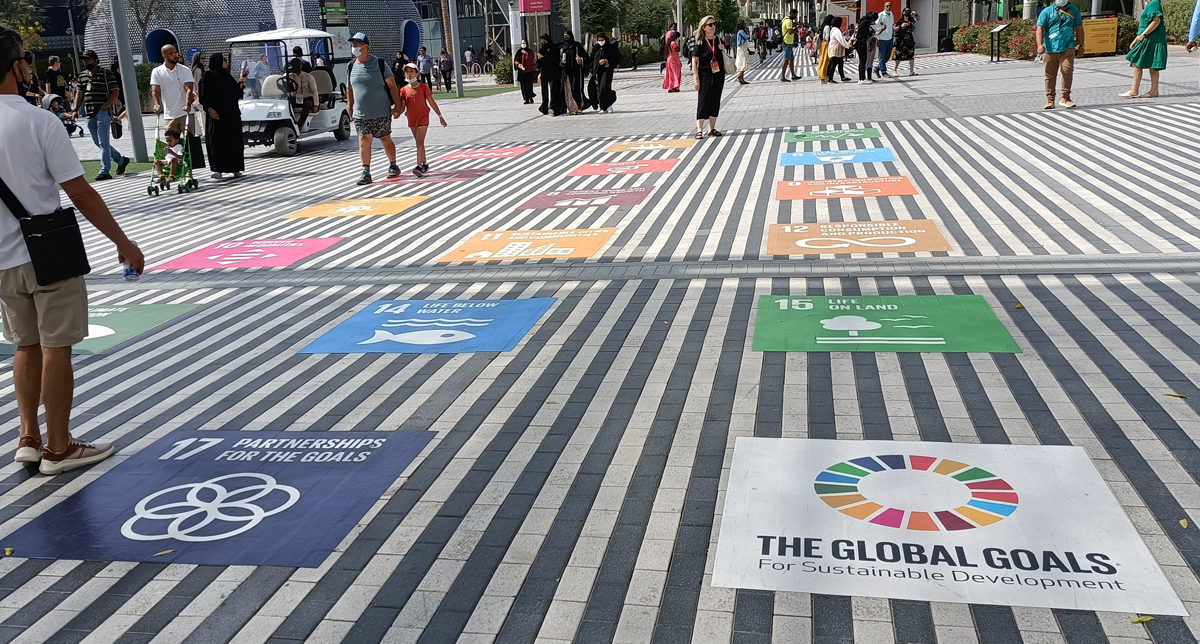
Although all 17 goals are represented at the Expo, the dominating sustainability solutions are those related to the environment, including renewable energies, the fight against CO2 and global warming, water usage, sustainable materials, etc. Many of these are directly connected to the design and construction of sustainable buildings, which is manifested in the fact that the Expo 2020 Dubai is home to 121 LEED-certified buildings!
Sustainability District
One-third of the Expo was dedicated to the so-called “Sustainability District”, with both pavilions delivering specific content provided by the host country (United Arab Emirates), as well as country pavilions that had chosen this specific location for their showcase.
Terra – the Sustainability Pavillion
The Sustainability Pavilion, called “Terra” is a huge structure covered with a spectacular 130-meter-wide canopy and additionally supported with 18 “Energy Trees”. Together they support more than 4,912 solar panels and generate 4GWh of alternative energy per year. Additionally, this building has a LEED Platinum certification for sustainable architecture.
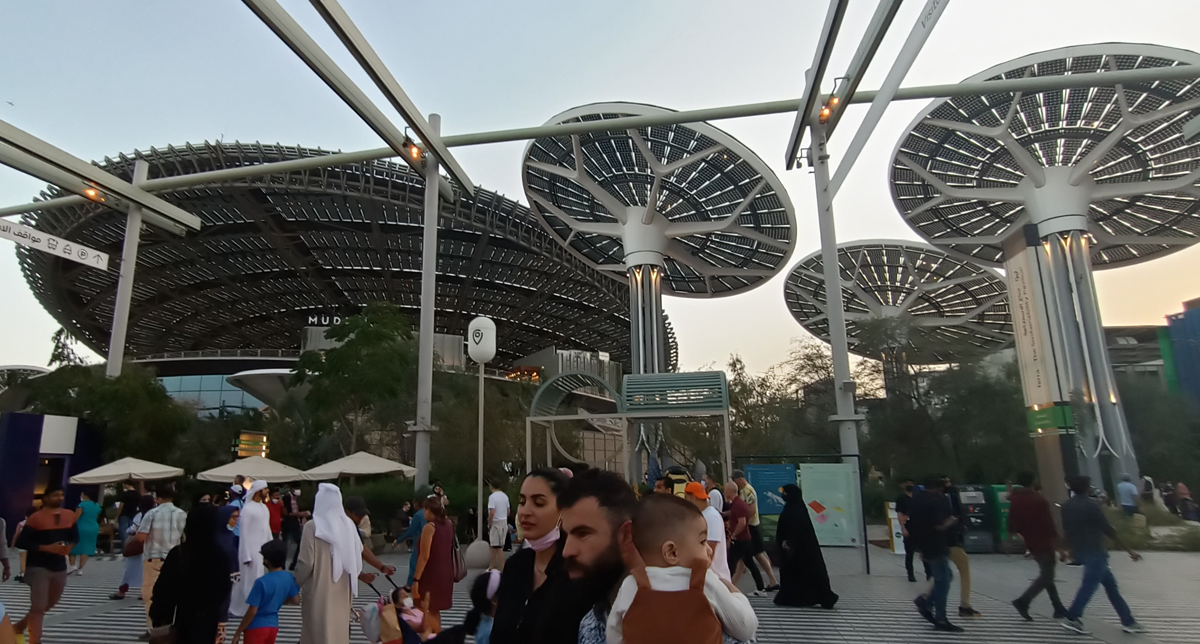
From a visitor’s perspective, “Terra” is designed as a journey for our planet and our shared future. It is divided into 3 experiences called: Wandering through forest roots; Dive into ocean depths, and Earth’s wonders corrupted. Here we can explore aspects such as our excessive consumerism and how we can change our habits to reduce our carbon footprint and environmental impact; the improvement of water usage in the landscape; and innovative projects providing solutions to help preserve our planet for future generations.
Sustainable Building in the National Pavilions
Many of the national pavilions I visited presented interesting solutions for sustainable building. Below are some of the best examples.
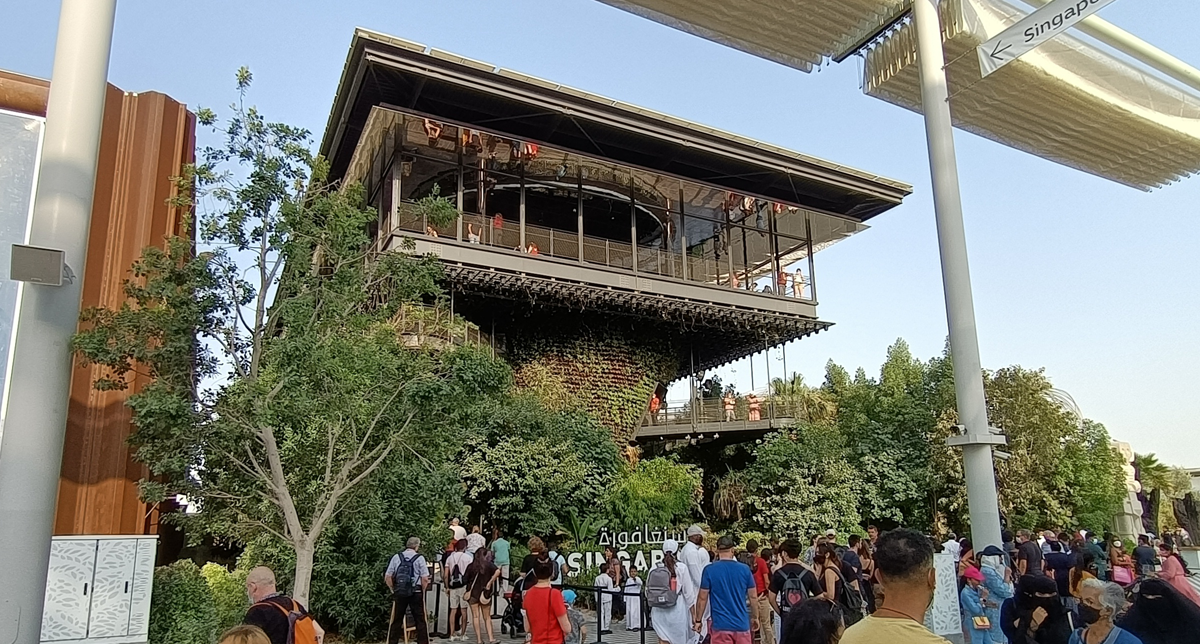
Singapore’s net-zero energy pavilion is a three-dimensional green space flanked by forest trees, capped with a spectacular Hanging Garden. The visitors can stroll across an undulating landscape and 9-meter-tall Garden Cones, referring to Singapore’s reputation as a City in a Garden. General messages about sustainable building are mixed with new types of DNA Manipulated Orchids in beautiful settings. This is my overall favorite among all pavilions!
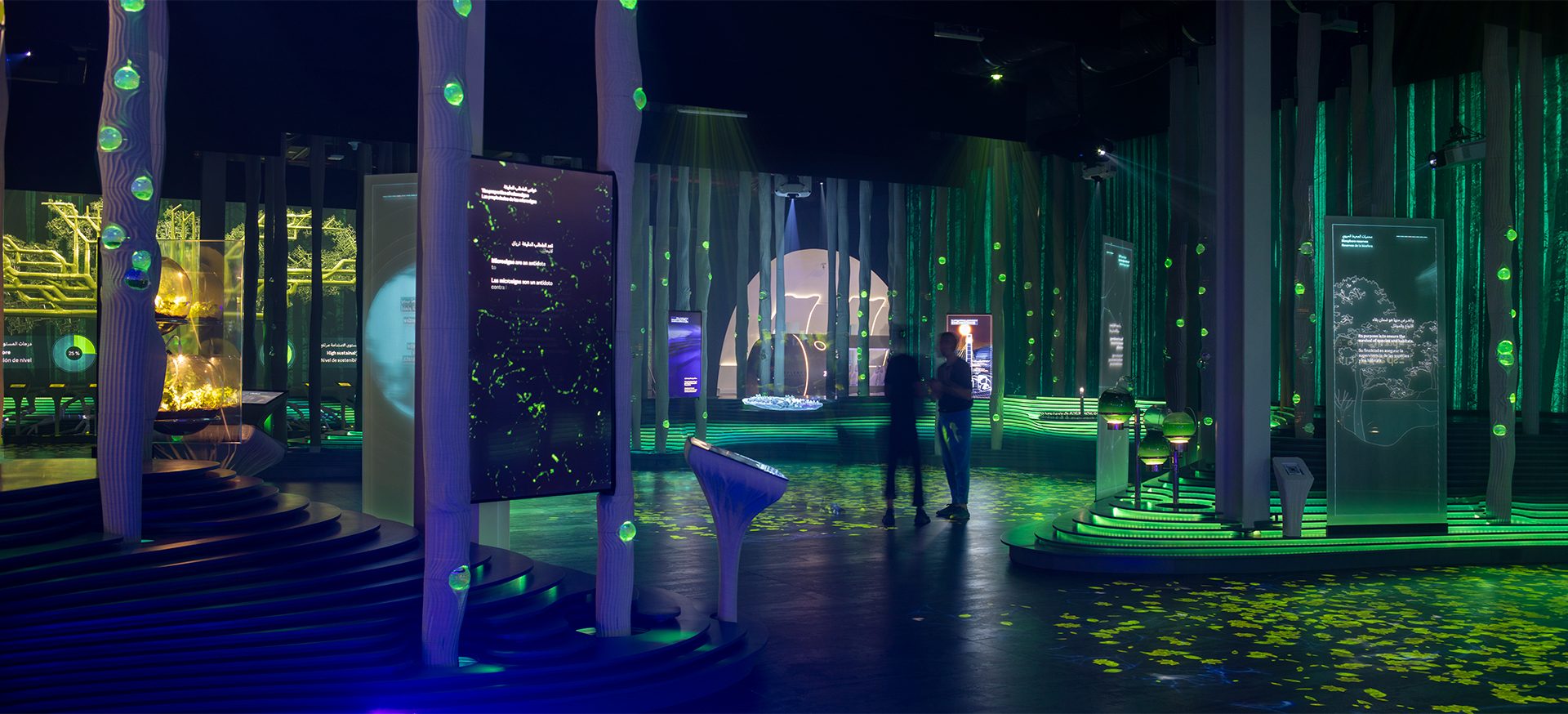
The Spanish pavilion is an example of intelligent creativity, capable of uniting people around sustainable projects in the fields of science, technology, production, education, and art. One section shows a broad selection of emerging innovative business projects and relevant Spanish start-ups, all linked to sustainability and the environment.
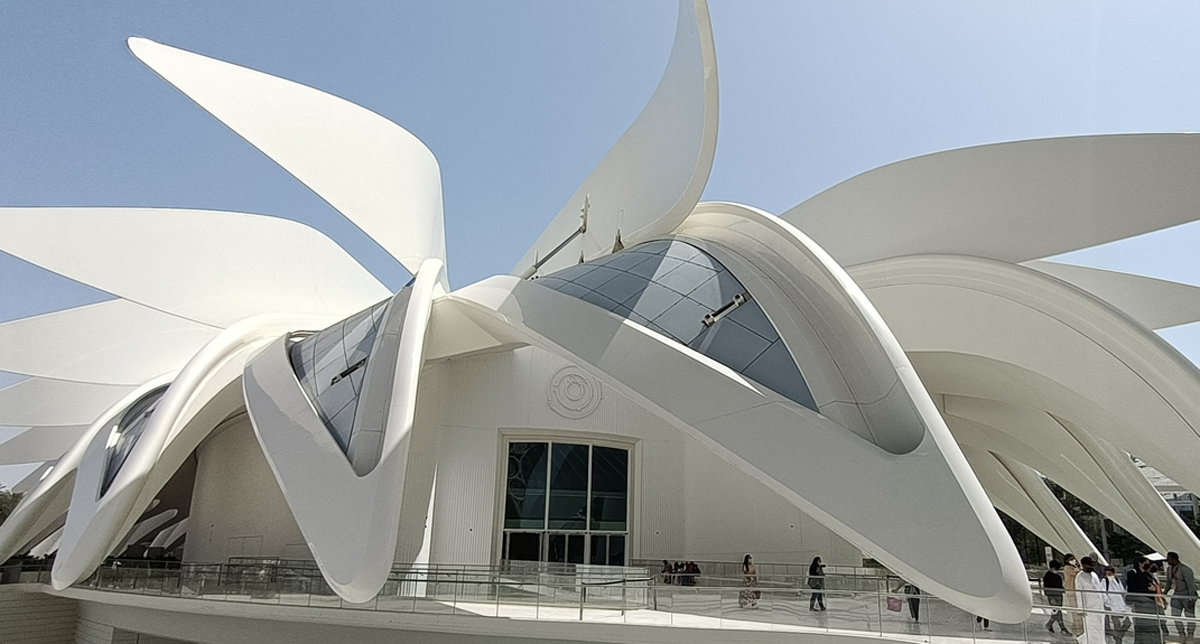
The pavilion of the United Arab Emirates is designed by the architect Santiago Calatrava and is a spectacular example of a sustainable building. The Pavilion’s roof can spread its wings to harvest energy through integrated mobile photovoltaic panels and has been accredited with the LEED Platinum Certification.
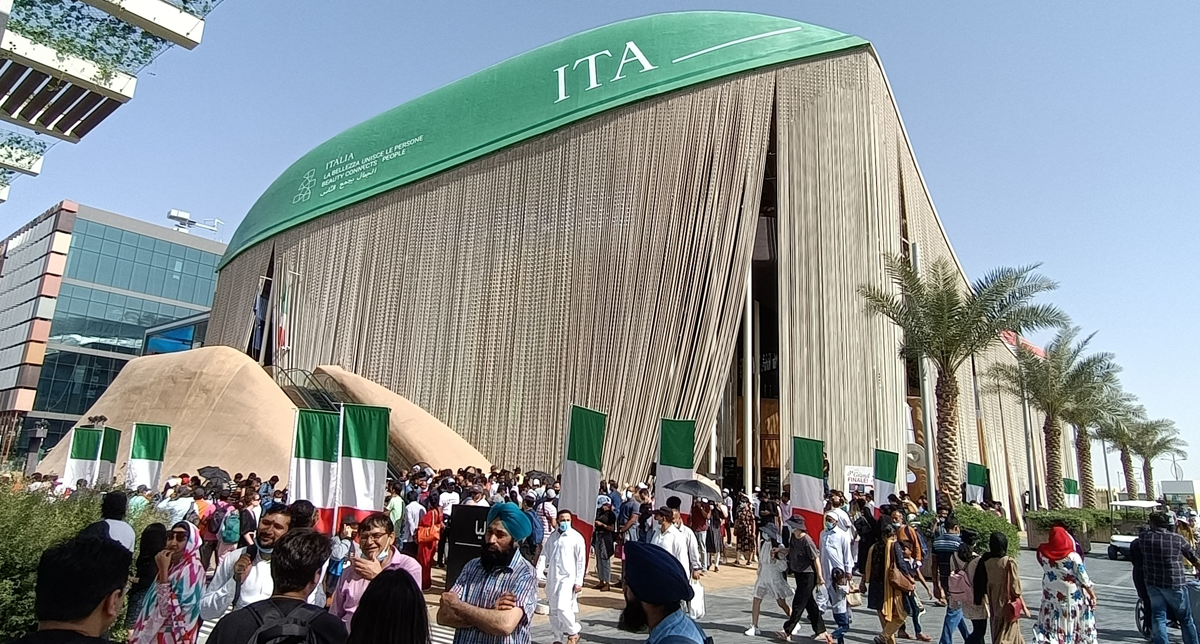
The Italian pavilion has the ambition to provide the best building, systems, technology, and exhibition components, demonstrating the highly innovative capabilities involved today in sustainability, circular economy, and digital architecture. For example, it uses recycled plastic in the ropes in the facade, sustainable painting from the rests from coffee production, a floor made of the remains of oranges from the making of orange juice, a recycled boat structure for the ceiling and much more.
Smart Cities: Mobility, Energy, Connectivity and AI
Another third of the Expo’s surface is dedicated to the “Mobility District”. Mobility, together with Energy, Connectivity and AI, are the areas belonging to Smart Cities, which have the strongest presence at the Expo.
Mobility Pavilion and Smart Cities
The Mobility Pavilion lets you step into the future where smart cities are created through artificial intelligence, big data, robotics, machine learning and autonomous transport.
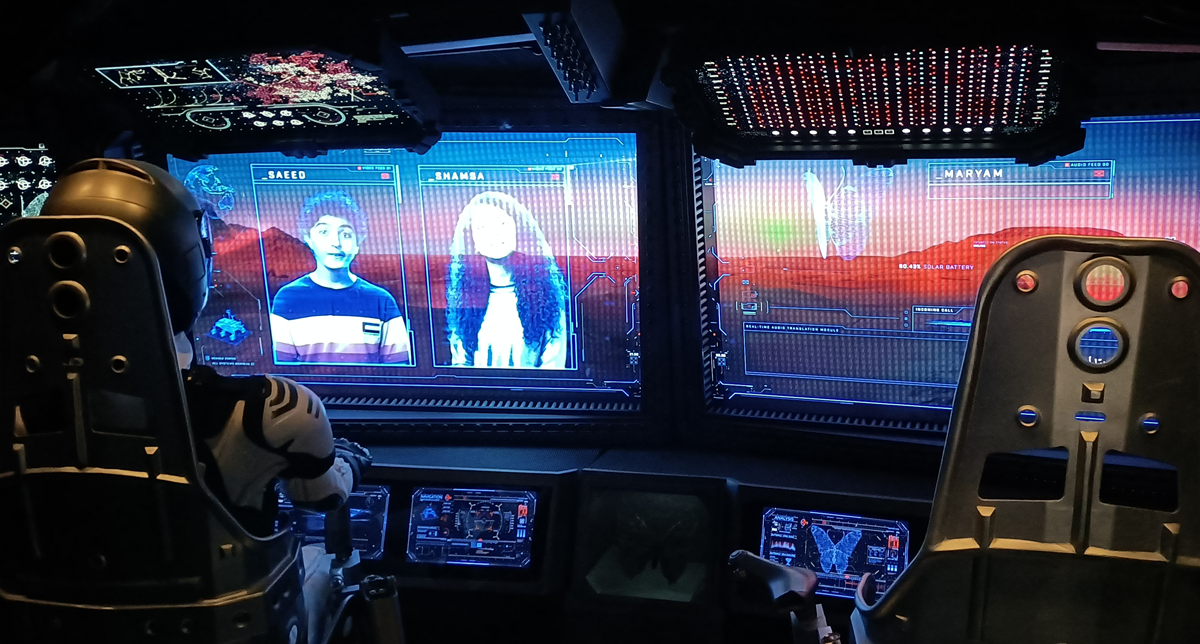
Here we can learn about the complexity of moving goods around the world and how mobility could evolve in the human-centric city of the future.
Smart Cities in the National Pavilions
Many of the pavilions I visited showed solutions related to Smart Cities.
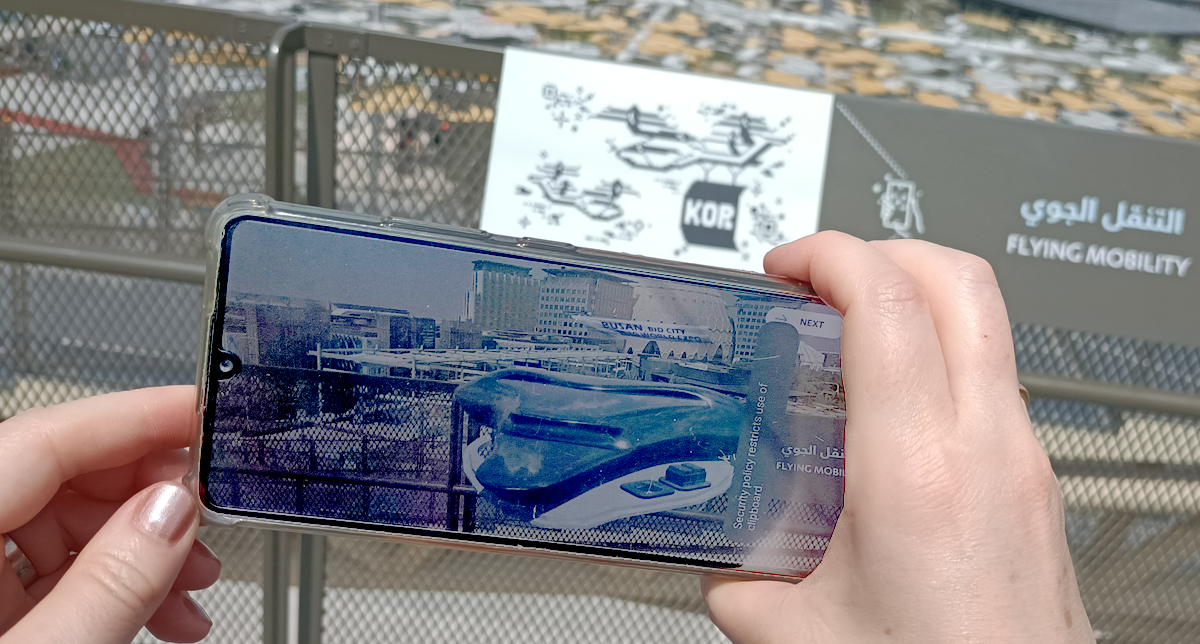
The pavilion of the Republic of Korea showcases a number of innovative flying mobility and fast-speed transportation solutions through different stations equipped with Augmented Reality. Hence as a visitor, you experience the vehicles flying over the exterior expo area, and at the same time, the solution provides information about the functionality and technology of these futuristic mobility solutions.
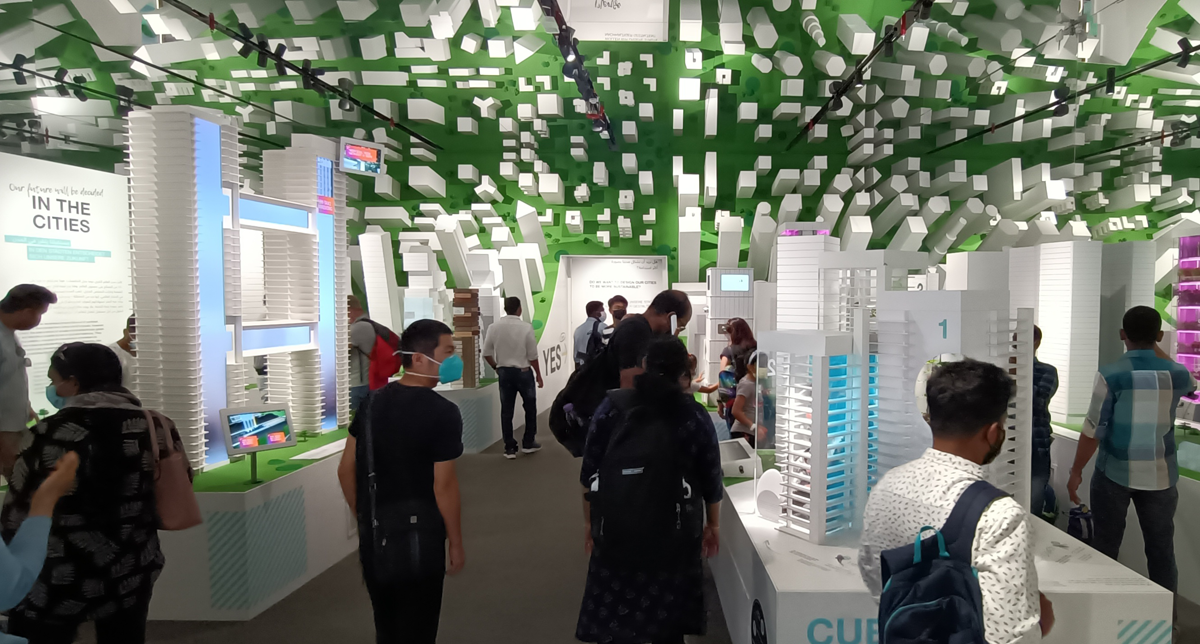
In the German pavilion, the user experience is built as a Campus, where the visitors can learn and graduate in different areas. In the Energy Lab, “energy cables” will pulsate with energy supply solutions for the future, and in the Future City Lab, the visitors will become part of an intricate urban landscape that surrounds them.
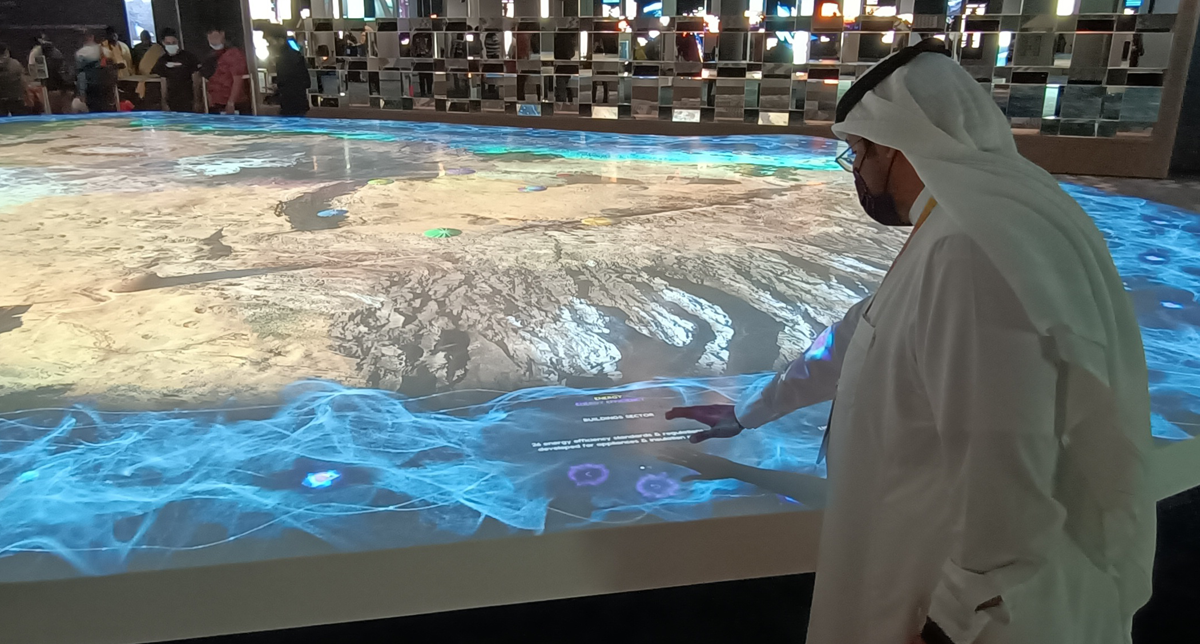
The Saudi Arabian pavilion offers a glimpse into our shared future through a journey across the pillars: people, nature, heritage, and opportunities. A huge interactive map lets us dive into specific projects related to energy efficiency and renewable energy across the country. It is also one of the largest pavilions at Expo 2020 Dubai and has an innovative and sustainable design that is LEED Platinum Certified.
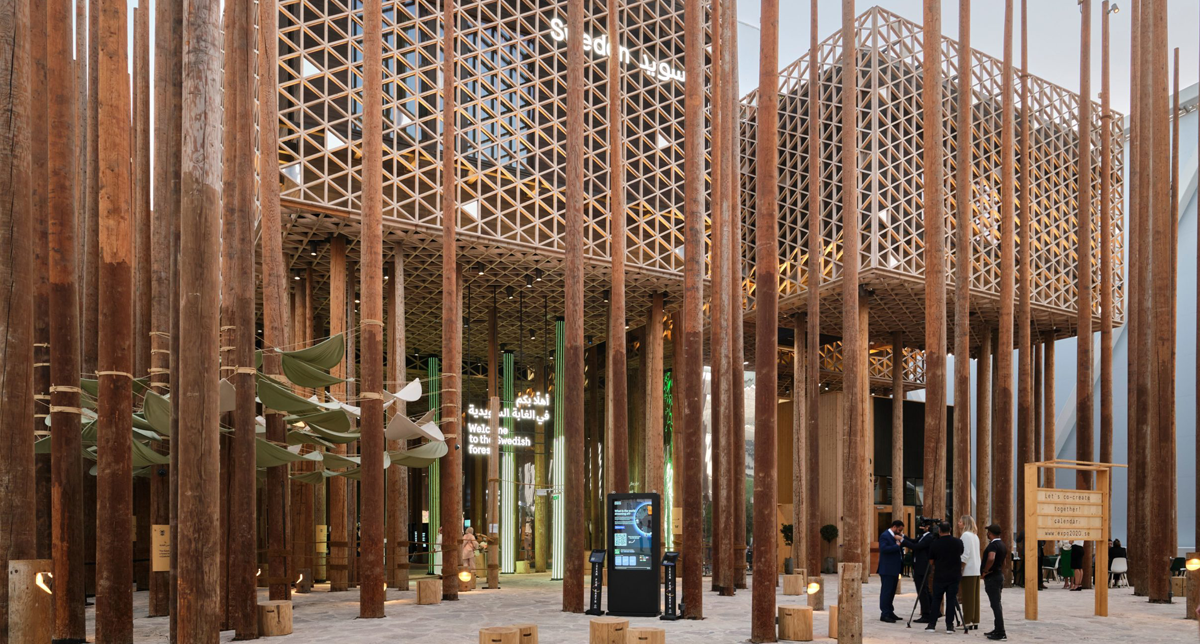
The Swedish Pavilion focuses on new ways to build a Smart Society through topics such as tech, life science, next-generation transport, Industry 4.0, new materials, smart cities, and circular bio-based economies.
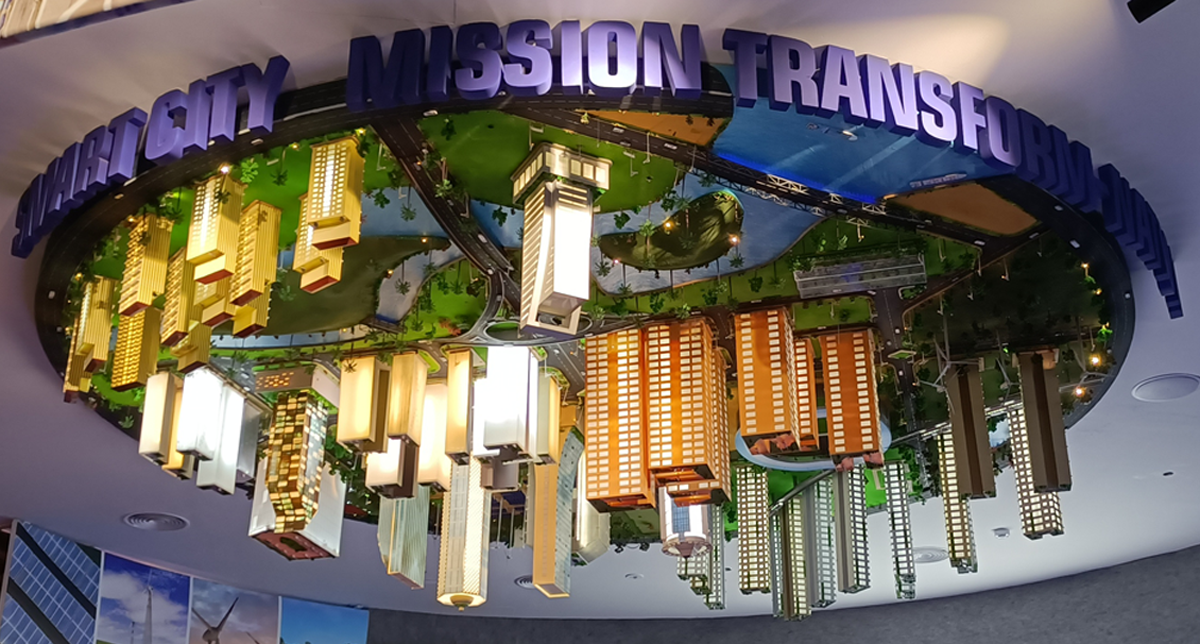
India’s pavilion is a mesmerizing all-digital experience with the latest technologies that create an ambient, futuristic environment with installations powered by augmented reality and projection mapping. Among the promoted areas, we find the mission to transform their cities into Smart Cities through smart energy, smart mobility, and smart health.
Conclusions
A World Expo is a festival and a platform where people from all over the world come together to share ideas, learn, innovate, and connect. And this has successfully been achieved at the “Expo 2020 Dubai”.
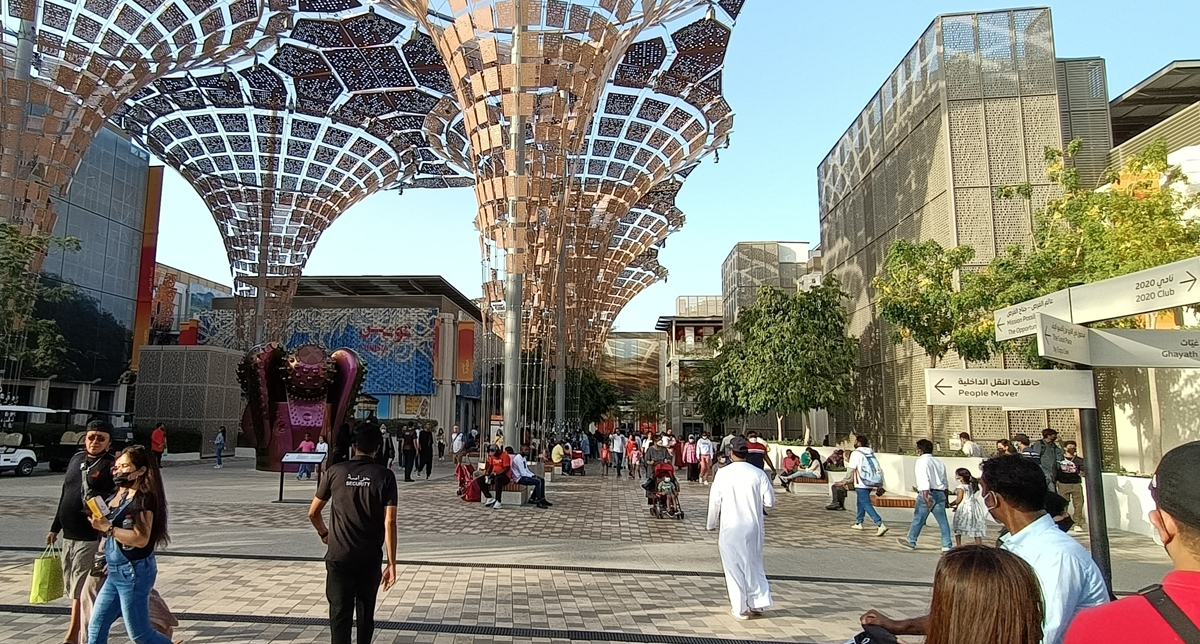
“Expo 2020 Dubai” was also the first World Expo to be held in the Middle East, Africa, and South Asia (MEASA) region and the first to be hosted by an Arab nation. And participating in this event has helped me to understand further how the mission and vision on how to approach our common future differ globally, but how we’re all committed to contributing to the progression and improvement of a world in line with the Sustainable Development Goals.
Here are some other reflections I bring with me from the Expo 2020 Dubai:
- It is possible to build “Sustainable Buildings” in any climate, with net-zero energy use, sustainable materials, efficient processes, and respect for the ecological environment. But we need to further reflect on “what” and “where” we build and how this can contribute to a broader approach to sustainability.
- When we develop our Smart Cities, it is necessary not only to solve “existing problems” but also to innovate in the ways we organize our societies regarding work, life, consumption, etc. and to support our progression towards a Circular Economy.
- The Sustainable Development Goals are in the DNA of most national and international political agendas, but the specific goals prioritized by each country and the strategies to reach them are vastly different, and this is incredibly positive as it generates a broader range of solutions regarding scale, techniques, necessary investments, etc. to be adapted to diverse needs.
The next expo, “Expo 2025” will be held in Osaka, Japan, and it will take place for six months, opening on the 3rd of May 2025, and closing on the 23rd of November 2025. I hope to see you all there, and that we can then look back to “Expo 2020 Dubai” and see how we have progressed in the areas of Sustainable Building and Smarter Cities since then and that we have gotten closer to the achievements of the different Sustainable Development Goals.
